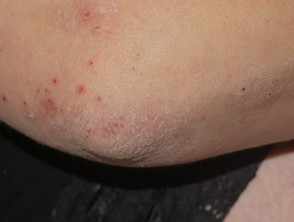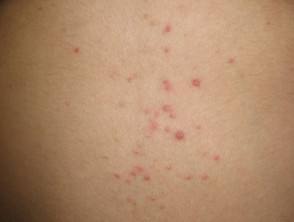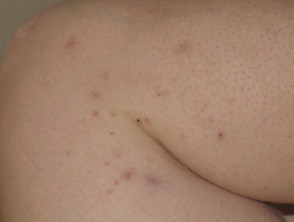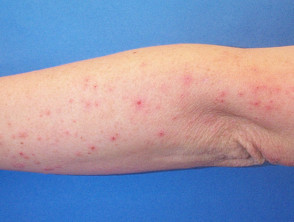What is prurigo of pregnancy?
Prurigo of pregnancy is a benign non-specific pruritic (itchy) papular rash that arises during pregnancy.
Prurigo of pregnancy has been described using a number of names including prurigo gestationis, early onset prurigo of pregnancy, papular dermatitis of pregnancy, and pruritic folliculitis of pregnancy. It is likely it will be further characterised and divided up into subsets in the future.
Who gets prurigo of pregnancy?
- Prurigo of pregnancy can occur in up to 1 in 300 pregnancies.
- It generally appears in the 2nd or 3rd trimester, but it has been reported in all stages of pregnancy.
What causes prurigo of pregnancy?
The cause of prurigo of pregnancy is at present unknown. The association or lack of association with atopic dermatitis is debated.
What are the clinical features of prurigo of pregnancy?
It typically presents as papular dermatitis (prurigo). It may resemble nodular prurigo.
- The papules are often grouped.
- They are predominately found on the extensor surfaces of the limbs and sometimes the trunk
- Papules are 0.5–1cm in size.
- They may or may not be centred on a hair follicle.
- Some lesions have a central crust.
- Pustules may be seen, but blisters (vesicles) are not.
- The papules are often excoriated, due to the itch.
Prurigo of pregnancy
See more images of prurigo of pregnancy ...
How is prurigo of pregnancy diagnosed?
Prurigo of pregnancy is a clinical diagnosis. Other diagnoses not related to pregnancy should also be considered, as there are no specific diagnostic tests.
The histopathology of prurigo of pregnancy shows non-specific dermatitis. Direct immunofluorescence is negative.
Blood tests for liver function should be done to exclude an alternative diagnosis of cholestasis of pregnancy.
What is the treatment of prurigo of pregnancy?
There is no specific treatment for prurigo of pregnancy. Symptom relief may be achieved with:
- Benzoyl peroxide
- Emollient with menthol
- Moderate potency topical steroid cream or ointment
- Oral antihistamines
- Phototherapy.
What is the outcome of prurigo of pregnancy?
Prurigo of pregnancy resolves after delivery of the baby. However, resolution can take as long as several weeks to months post-partum.
Recurrence with each pregnancy is variable. Prurigo of pregnancy is not associated with any maternal or foetal risks.



